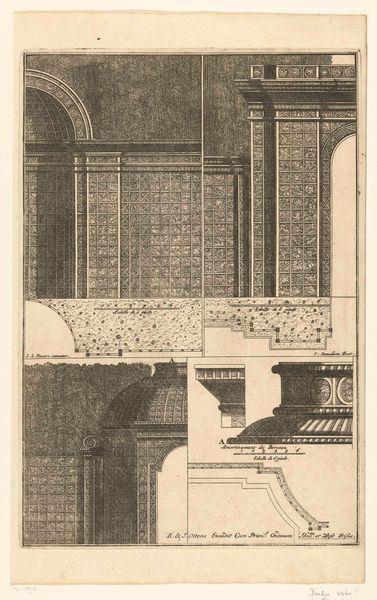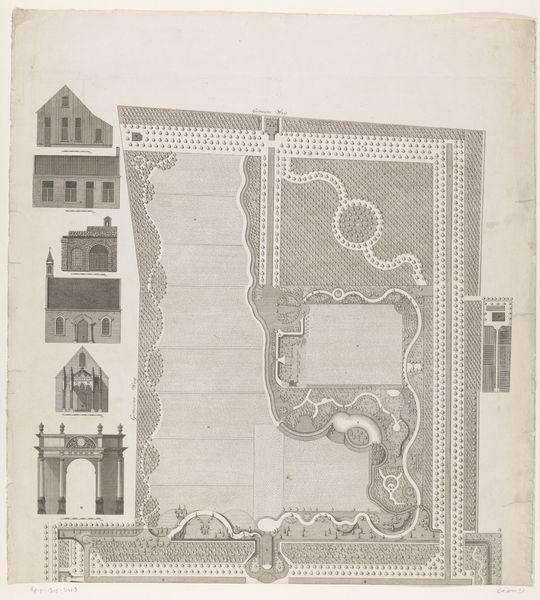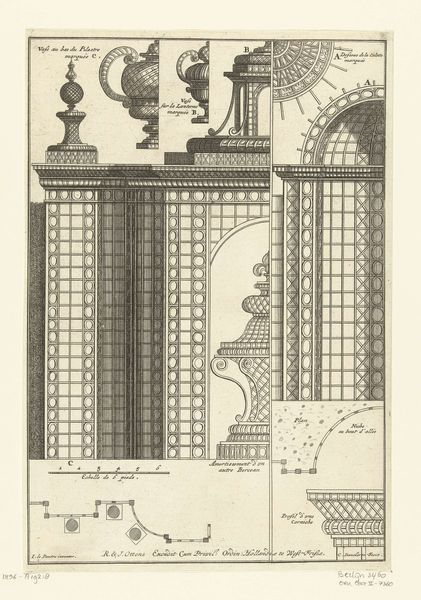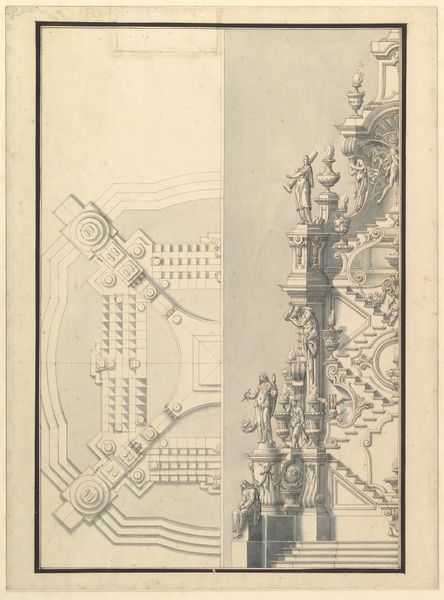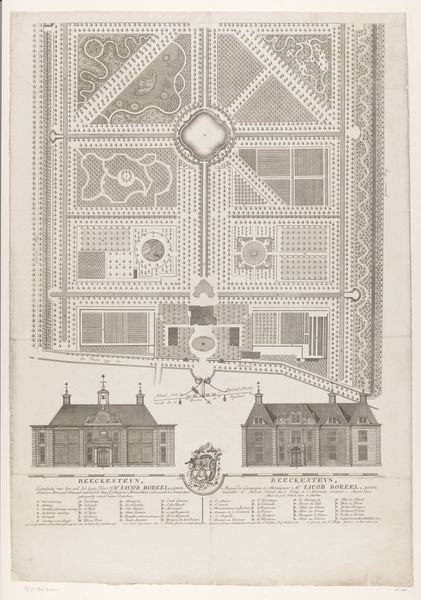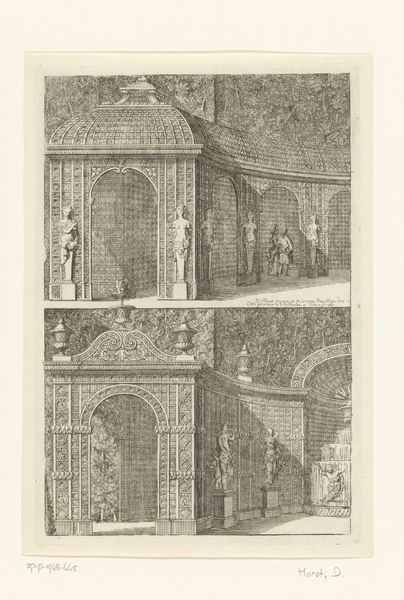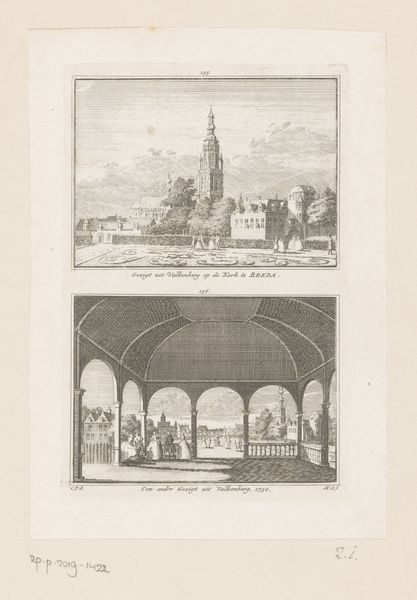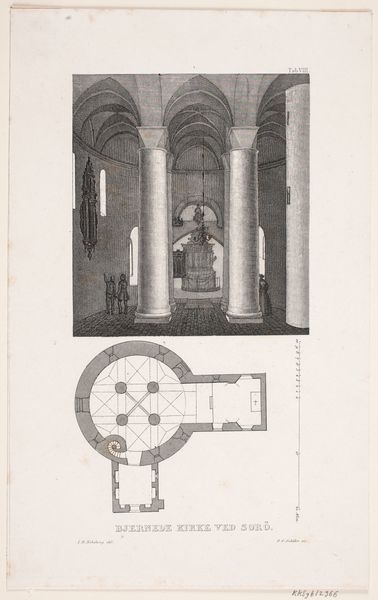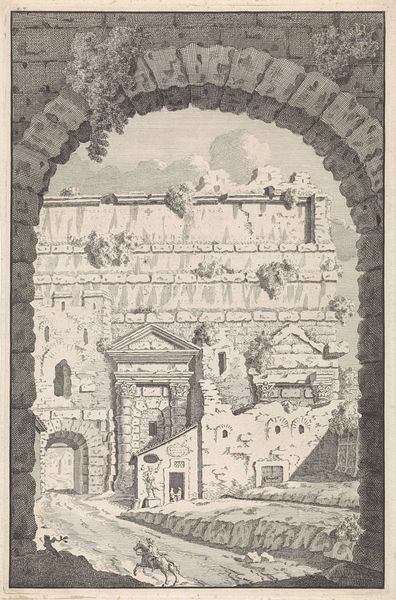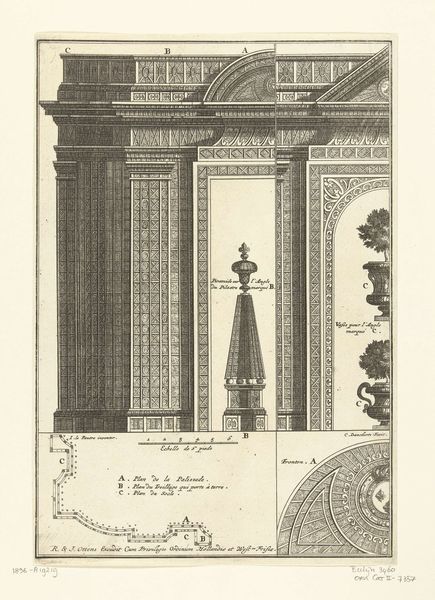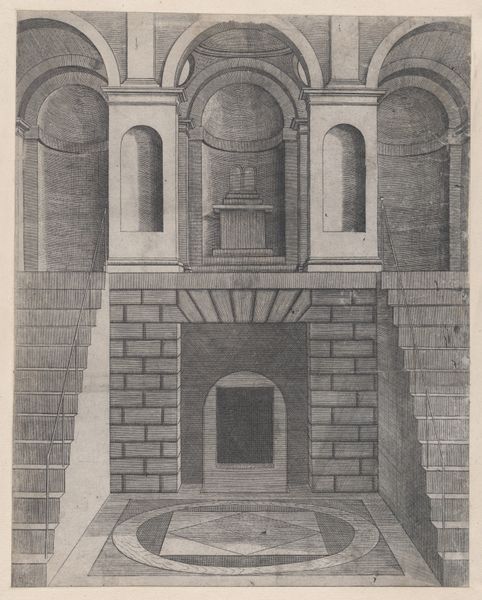
drawing, print, engraving, architecture
#
pen and ink
#
drawing
#
pen drawing
#
mechanical pen drawing
# print
#
pen illustration
#
pen sketch
#
old engraving style
#
geometric
#
cityscape
#
history-painting
#
engraving
#
architecture
Dimensions: height 281 mm, width 194 mm
Copyright: Rijks Museum: Open Domain
Curator: So, what are your initial thoughts on Cornelis Danckerts' "Latwerkpaviljoen met waterbuffet," dating possibly between 1726 and 1765? Editor: Well, first, I'm struck by its detail – all done with pen and ink, right? It’s so precise. I see a design for an elaborate garden structure. But it's more than just a practical plan, don't you think? It feels… idealized, maybe even a little aspirational. What do you see in this piece? Curator: Absolutely. Let's consider the historical context. This wasn’t just a drawing; it was a projection of power and status. Formal gardens during this period were expressions of control, a visual metaphor for taming nature – much like societal control over the marginalized. How does the rigid geometry play into this? Editor: The geometry? I guess it reinforces that idea of control. Everything is so structured and ordered. Curator: Exactly! And who benefits from this order? Consider the wealth and labor needed to create such a space. The "waterbuffet" aspect is telling; water, often a symbol of purity and life, is here turned into a spectacle for the elite. It highlights inequalities and power dynamics inherent in that society. How does it make you feel to consider the hidden aspects that architecture usually conceals? Editor: That's… a lot to take in. I initially just saw a pretty garden design, but now I'm thinking about the social and political implications. It does make you think about the labor that makes gardens exist, right? Curator: Precisely. Art isn't created in a vacuum. Considering the social backdrop helps us confront inequalities. It allows for discussions around access, privilege, and the manipulation of resources, even in something as seemingly benign as a garden plan. Editor: I never thought I could analyze a garden design like that. Thank you for highlighting its intersectional implications and revealing those historical insights! Curator: My pleasure. Keep digging beneath the surface; the real stories are often hidden in plain sight.
Comments
No comments
Be the first to comment and join the conversation on the ultimate creative platform.
